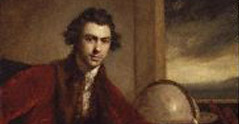|
GOTHIC FICTION
Introduction
by Peter Otto
8 - Terror and Horror Gothic
The differences between the Gothic fictions of, on the one hand, Radcliffe and her imitators and, on the other hand, Lewis and his followers is the implicit subject of an essay by Radcliffe entitled "On the Supernatural in Poetry", published posthumously in the New Monthly Magazine in January 1826. Designed as an excerpt from the ‘Introduction’ to Gaston De Blondeville, the essay reports a rather one-sided discussion between two travellers, Mr. W--- (Willoughton) and Mr. S--- (Simpson). The latter is introduced as one "who seldom troubled himself to think upon any subject, except that of a good dinner". The former, a literary enthusiast, develops the important distinction between terror and horror:
“'They must be men of very cold imaginations,' said W---, 'with whom certainty is more terrible than surmise. Terror and horror are so far opposite, that the first expands the soul, and awakens the faculties to a high degree of life; the other contracts, freezes, and nearly annihilates them. I apprehend, that neither Shakespeare nor Milton by their fictions, nor Mr. Burke by his reasoning, anywhere looked to positive horror as a source of the sublime, though they all agree that terror is a very high one; and where lies the great difference between horror and terror, but in the uncertainty and obscurity, that accompany the first, respecting the dreaded evil?’”
As his allusion to Burke suggests, Mr. W--- is drawing on A Philosophical Enquiry into the Sublime and the Beautiful (1757), in particular its contention that "terror is ... the ruling principle of the sublime" and that no object is "terrible" if it is not also veiled in obscurity. Burke's argument was elaborated in works by, amongst others, Anna Laetitia Aikin and Nathan Drake. In the context of the debate between Mr. W--- and Mr. S---, conducted as they travel to Kenilworth Castle, the distinction justifies Radcliffe's Gothic fiction at the expense of the "kind" fostered by Lewis. The lurid horrors of the latter, stop readers in their tracks, appalled by what has been vividly set before them. The uncertain terrors of the former make readers, like the characters, active participants in the struggle to discern the truth behind equivocal appearances.
In the twentieth century, the distinction between terror and horror is often incorporated within the much more ambitious contrast between male and female Gothic. In the former, horror is a result of the persistence of the past in the present: it is engineered by the patriarchal father (the priest, tyrannical father), religious institutions, and tyrannical (often aristocratic) families. Supernatural terrors are real; yet at the same time, the experience of horror shatters everyday reality and reveals the unmanageable depths of the human psyche (rather than the guiding hand of God). As this suggests, male Gothic is often structured as an oedipal struggle between sons and patriarchal fathers, whether familial, religious or divine.
In contrast, female Gothic locates the source of terror in the present, in the possibility that the paternal protector (whether father or lover) is untrustworthy or immoral. Supernatural terrors are discovered to be illusions, fabricated by the heroine's imagination, a consequence of a culture that shelters her from the truth. Female Gothic fictions often involve, therefore, a struggle between daughters and paternal (or patriarchal) fathers. Terror evaporates as the heroine learns of her true identity. Alternatively, it modulates into awe, as the heroine glimpses the divine order behind nature.
Although helpful as a first ordering-principle, a glance at the diverse texts contained in this microfilm collection indicate the limits of any attempt to divide Gothic fictions between these camps. So-called male Gothic fiction includes books by female authors (Charlotte Dacre, Sophia L. Francis, Ann Julia Hatton, Harriet Jones, Anna Mackenzie, and so on); and men produce works that appear to belong with female Gothic fictions (T. J. Horsley Curties, Isaac Crookenden, Francis Lathom, George Moore). As Norton observes,
“Once the genre is categorized by gender, a host of cross-overs rise up between female writers of 'male Gothic' and male writers of 'female Gothic', and the distinctions between classifiable types breaks down. Isaac Crookenden wrote 'the male Gothic' by the simple expedient of plagiarizing Ann Radcliffe's novels and reversing the gender of the characters.”
Moreover, many Gothic fictions draw on both Radcliffe and Lewis, terror and horror, male and female Gothics. This is nicely suggested by the title of T. J. Horsley Curties' sensational The monk of Udolpho; a romance (London: J. F. Hughes, 1807), which advertises its indebtedness to the ur-texts of male and of female Gothic. Mary Shelley's Frankenstein is for the twenty-first century perhaps the most well-known Gothic fiction to combine elements of both streams.
9 - Gothic Echoes / Gothic Labyrinths
<Back to Contents
|
|















